1. Enna SJ, Maggi A. Minireview: Biochemical pharmacology of GABA-ergic agonists. Life Sci 24:1727. 1979.


2. Tappaz M, Brownstein MJ, Kopin IJ. Glutamate decarboxylase (GAD) and gamma-aminobutyric acid (GABA) in discrete nuclei of hypothalamus and substantia nigra. Brain Res 125:109. 1977.


3. Cheramy E, Nieoullon A, Glowinski J. GABAergic processes involved in the control of dopamine release from nigrostriatal dopaminergic neurons in the cat. European J Pharmacol 48:281. 1978.

4. Soubrie P, Montastruc J-L, Bourgoin S, Reisine T, Artaud first initial, Glowinski J. In vivo evidence GABAergic control of serotonin reease in the cat substan nigra. European J Pharmacol 69:483. 1981.

5. Sangiah S, Borowitz JL, Yim GKW. Actions of GABA, picrotoxin and bicuculline on adrenal medulla. European J Pharmacol 27:130ŌĆō1351974.

6. Kitayama S, Morita K, Dohi T, Tsujimoto A. The nature of the stimulatory action of gamma-aminobutyric acid in the isolated perfused dog adrenals. Naun Schmied Arch Pharmacol 326:106ŌĆō1101984.

7. Kitayama S, Morita K, Dohi T, Tsujimoto A. Potassium ion is indispensable to the catecholamine releasing response of dog adrenals to gamma-Amimobutyric acid. Naun Schmied Arch Pharmacol 332:66ŌĆō691986.

8. Lim DY, Choi CH, Oh JH. Influence of gamma-Aminobutyric acid on secretion of catecholamines in the isolated rat adrenal gland, the 7th Korea-Japan Joint seminar on pharmacology. Abstract. 19. 1988.
9. Sweet CS, Wenger HC, Gross DM. Central antihypertensive properties of muscimol and related gamma-aminobutyric acid agonists and the interaction of muscimol with baroreceptor reflexes. Can J Physiol Pharmacol 57:600ŌĆō6051979.


10. Takahashi H, Tiba M, Ino M, Takayasu T. The effect of gamma-aminobutyric acid on blood pressure. Jpn J Physiol 5:334ŌĆō3391955.


11. Antonaccio MJ, Taylor DG. Involvement of central GABA receptors in the regulation of blood pressure and heart rate of anesthetized cats. Eur J Pharmacol 46:283ŌĆō2871977.


12. Williford DJ, Hamilton BL, Souza JD, Williams TP, DiMicco JA, Gillis RA. Central nervous system mechanisms involving GABA influence arterial pressure and heart rate in the cat. Circ Res 47:80ŌĆō881980a.

13. Baum T, Becker FT. Hypotensive and postural effects of the gamma-aminobutyric acid agonist muscimol and of clonidine. J Cardiovasc Pharmacol 4:165ŌĆō1691982.


16. Persson B. Cardiovascular effects of intracerebroventricular GABA, glycine, and muscimol in the rat. Naunyn Schmiedebergs Arch Pharmacol 313:225ŌĆō2361980b.

17. Gillis RA, Williford DJ, Souza JD, Quest JA. Central cardiovascular effects produced by the GABA receptor agonist drug, THIP. neuropharmacology 21:545ŌĆō5471982.


18. Antonaccio MJ, Kerwin L, Taylor DG. Reductions in blood pressure, heart rate and renal sympathetic nerve discharge in cats after the central administration of muscimol. a GABA agonist. Neuropharmacolgy 17:738ŌĆō7911978.

19. Unger TH, Bles F, Ganten D, Lang RE, Rettig R, Schwab NA. GABA-ergic stimulation inhibits central actions of angiotensin II: Pressor responses, drinking, and release of vasopressin. Eur J Pharmacol 90:1ŌĆō91983.


20. Taylor DG, Taylor KA, Antonaccio MJ. Pharmacologic studies on sympatho-inhibition produced by the medial medullary depressor region: Proposed gamma-aminobutyric acid involvement in inhibition of somatosympathetic reflexes. J Pharmacol Exp Ther 222:517ŌĆō5251982.

21. Unger T, Becker H, Dietz F, Gauten D, Lang RF, Rettig R, Schomig A, Schwab NA. Antihypertensive effect of the GABA receptor agonist muscimol in spontaneously hypertensive rats; Role of the sympathoadrenal axis. Cir Res 54:30ŌĆō371984.

22. Gilman AG, Goodman LS, Gilman A. The pharmacological basis of therapeutics. 7th ed. New York: 1985;131. 207. 215. 248. 433. 792.
23. Granam RM, Pettinger WA. Prazosin. New Engl J Med 300:232. 1979.


24. Vincent J, Meredith PA, Reid JL, et al. Clinical pharmacokinetics of prazosin-1985. Clin Pharmacokinet 10:144. 1985.


25. Ticku MK, Olsen RW. R-aminobutyric acid stimulated chloride permeability in crayfish muscle. Biochem Biophys Acta 464:519. 1977.


26. Ticku MK, Olsen RW. Cage convulsants inhibit picrotoxini binding. Neuropharmacology 18:315. 1979.


27. Ticku MK, Bar M, Olsen RW. Binding of [
3H] a-dihydropicrotoxin, an r-aminobutyric acid synaptic antagonist, to rat brain membranes. Mol Pharmacol 14:391. 1978.

28. Bowery NG, Hill DR, Hudson AK, Price GW, Turnbull MJ, Wilkin GP. Heterogeneity of mammalian GABA receptors. In actions and interactions of GABA and benzodiazepines. In: Bowery NG, ed. New York: Raven Press, 81ŌĆō1081984a.
29. Willow M, Johnston GAR. Enhancement of GABA binding by pentobarbitone. Neurosci Let 18:323ŌĆō3271980.

30. Skerritt JH, Willow M, Johnston GAR. Diazepam enhancement of low affinity GABA binding to rat brain membranes. Neurosci Lett 29:63ŌĆō661982.


31. Skerritt JH, Johnston GAR. Enhancement of GABA binding by benzodiazeptines and related axiolytics. Eur J Pharmac 89:193ŌĆō1981983.

32. Haefely W. Actions and interactions of benzodiazepine agonists and antagonists at GABAergic synapses. In actions and interactions of GABA and benzodiazepines. In: Bowery NG, ed. New York: Raven Press, 263ŌĆō2851984.
33. Krantis A, Kerr DIB. GABA-induced excitatory responses in the guinea-pig small intestine are antagonized by bicuculline, picrotoxinin and chloride ion blockers, Naunyn-Schmiedeb. Arch Pharmacol 317:257ŌĆō2611981b.

34. De Groat WC. The actions of r-aminobutyric acid and related amino acids on mammalian autonomie ganglia. J Pharmacol Exper Ther 172:384ŌĆō3961970.
36. Guertzenstein PG. Vasodepressor and pressor responses to drugs topically applied to the ventral surface of the brain stem. J Physiol (Lond) 224:84. 85. 1972.
38. Johnston GAR. Physiologic pharmacology of GABA and its antagonists in the vertebrate nervous system. In GABA in Nervous System Function. In: Roberts E, Chase TH, Toweres DB, eds. New York: Raven Press, 395ŌĆō4071976.
39. DiMicco JA. Neurocardiovascular effects of the GABA antagonists picrotoxin and bicuculline in the cat: evidence for involvement of GABA in central cardiovascular control. PhD Thesis, Georgetown University. 1978.
40. DiMicco JA, Gillis RA. Neuro-cardiovascular effects produced by bicuculline in the cat. J Pharmacol Exp Ther 210:1ŌĆō61979.

41. DiMicco JA, Prestel T, Pearle DL, Gillis RA. Mechanism of cardiovascular changes produced by activation of the central nervous system with picrotoxin. Circ Res 41:446ŌĆō4511977.


42. DiMicco JA, Gale K, Hamilton BL, Gillis RA. GABA receptor control of parasympathetic outflow to the heart: Characterization and brainstem localization. Science 204:1106ŌĆō11091979.


43. Antonaccio MJ, Kerwin L, Taylor DG. Effects of central GABA receptor agonism and antagonism on evoked diencephalic cardiovascular responses. Neuropharmacology 17:579ŌĆō6031978b.

44. Killam KF. Convulsant hydrazides. II: Comparison of electrical changes and enzyme inhibition induced by the administration of thios emicarbazide. J Pharmacol Exp Ther 119:263ŌĆō2711957.

45. Curtis DR, Felix D, Game DJA, McCulloch RM. Tetanus toxin and the synaptic release of GABA. Brain RES 51:358ŌĆō3621973.


46. Taylor DG, Arbour KA, Antonaccio MJ. Effects of biculline and thiosemicarbazide on inhibition of reflex and spontaneous sympathetic nerve potentials in the cat (abstr). Neurosci Abstr 3:25. 1977.
47. Kerr JH, Corbett JL, Prys-Robert C, Smith A, Spalding JMK. Involvement of the sympathetic nervous system in tetanus. Lancet 2:236ŌĆō2411968.


48. Bowery NG, Doble A, hill DR, Hudson AL, Shaw JS, Turnbull MS. Baclofen: a selective agonsit for a novel type of GABA receptor. Br J Pharmacol 67:444. 1979.
49. Hill DR, Bowery NG. [
3H] Baclofen and [
3H] GABA bind to biculline-insensitive GABA
B sites in rat brain. Nature 290:149. 1981.


50. Ong J. Baclofen: Some effects in guinea-pig small and large intestine. Proc Aust Physiol Pharmacol Soc 12(2):114. 1981.
51. Kaplita PV, Waters DH, Triggle DJ. r-Aminobutyric acid action in guinea-pig ileal myenteric plexus. European J Pharmacol 79:43. 1982.

52. Bowery NG, Doble A, Hill DR, hudson AL, Shaw JS, Turnbull MS. Baclofen: a selective agonist for a novel type of GABA receptor. Br J Pharmacol 67:44. 1979.
53. Bowery NG, Hill DR, Hudson AL, Doble A, Middlemiss ND, Shaw J, Turnbull M. (ŌłÆ)-Baclofen decreases neurotransmitter release in the mammalian CNS by an action at a novel GABA receptor. Nature 283:92. 1980.


54. Bowery NG, Hill DR, Hudson AL. Bicuculline-insensitive GABAB receptors in mammalian brain: Specific binding of 3H-GABA and 3H-baclofen. Problems in GABA Research From Brain to Bacteria International Congress Series 565. In: Okada Y, Roberts E, eds. Excerpta Medica, Amsterdam: 302. 1982.
55. Constantine JW, McShane WK, Scriabine A, Hess HJ. Analysis of the hypotensive action of prazocin. Hypertension: Mechanisms and Managment. In: Onesti G, Kim KE, Moyer JH, eds. Grume & Stratton Inc, New York: 429. 1973.
56. Freis EE, Mackey JD, Oliver WF. The effect of ŌĆ£sympatholyticŌĆØ drugs on the cardiovascular responses to epinephrine and norepine phrine in man. Circulation 3:254. 1951.


57. Ablad B, Borg KO, Carlsson E, Johnsson G, Malmfors L, Regardh CG. A survey of the pharmacological properties of metoprolol in animals and man. Acta Pharmacol Toxicol 36(Suppl V):7. 1975.



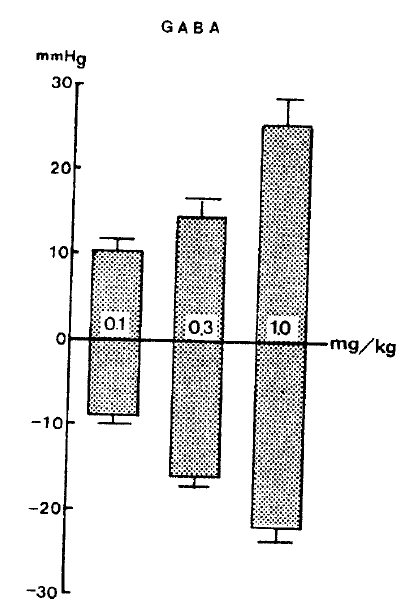
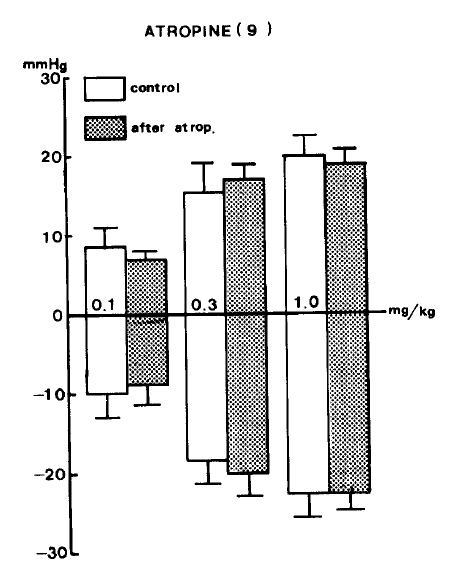
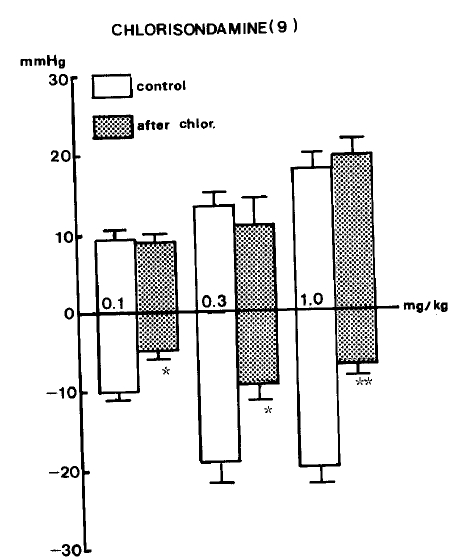
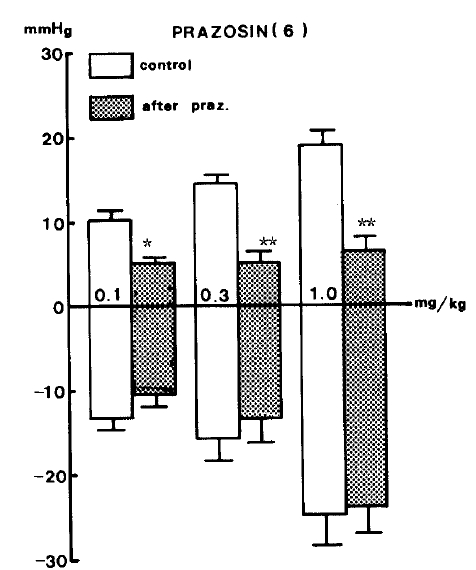

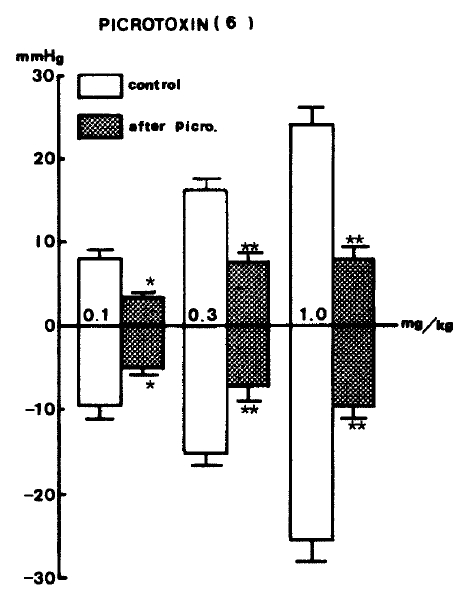





 PDF Links
PDF Links PubReader
PubReader ePub Link
ePub Link Full text via DOI
Full text via DOI Download Citation
Download Citation Print
Print


